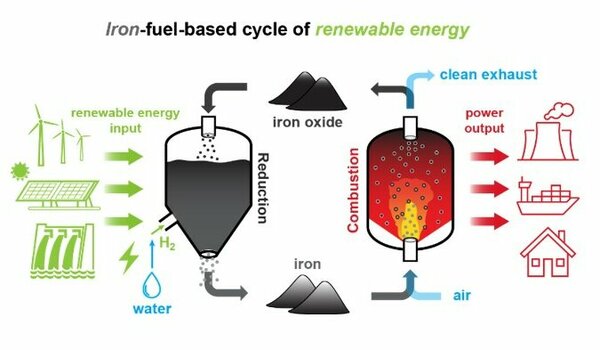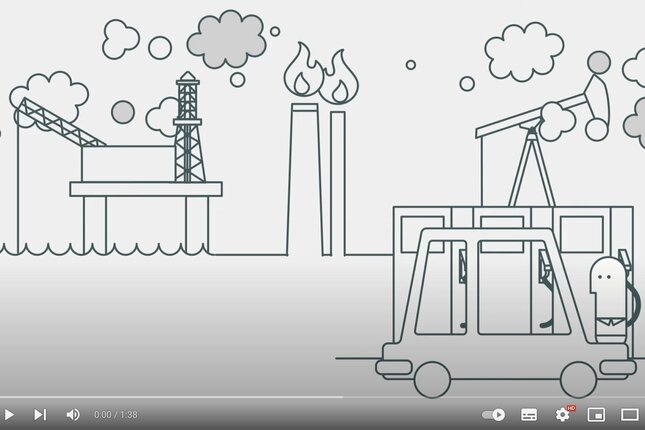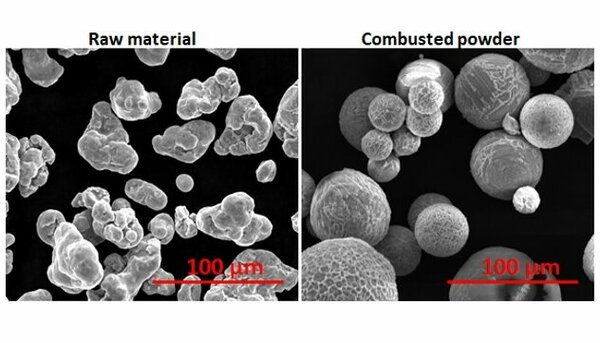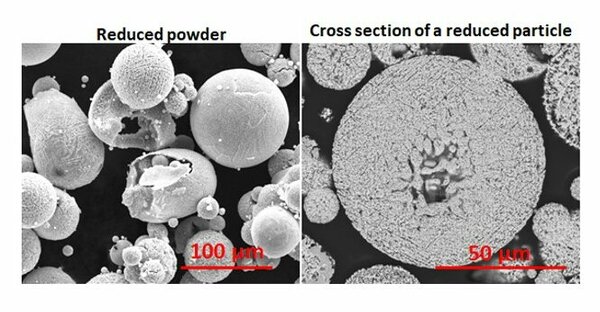Eindhoven University of Technology Receives NWO Grant to Identify Most Potent Iron Powders
TU/e and EIRES researchers Xiaocheng Mi and Giulia Finotello have been awarded a new project in NWO’s Open Technology Programme. The grant of 845,000 euros enables them to appoint one postdoc and two PhD researchers as part of the next steps in the large-scale deployment of metal powders as renewable energy carriers.

Big Challenge
One of the biggest challenges in the energy transition is overcoming the mismatch between society’s demand for a continuous energy supply and a geographically scattering and intermittent supply of energy from renewable sources such as windmills and solar panels.
Iron powder is considered as one of the most promising circular carriers of renewable energy, owing to its high energy density, carbon-free nature, and high potential of recyclability.
TU/e and their main industrial collaborator in this field Metalot are world leaders in the fundamental studies and technological development of iron powder as an energy carrier.

How to produce the powder
To establish a so-called Metal-enabled Cycle of Renewable Energy (MeCRE) on a global scale, a massive amount of iron powder is required.
The focus of the new project MeCRE within the Power & Flow group at TU/e’s Department of Mechanical Engineering is to determine which powder production method yields the best powder material properties for repeated combustion and reduction, which represent the burning and recharging steps of the iron powder cycle.
In the project, the researchers will evaluate the powder material properties of both “fresh” iron powders sourced from various feedstocks provided by the User Committee Members, including KWR Water Research Institute (The Netherlands), ArcelorMittal (France), Pometon Spa (Italy), and Companhia Siderúrgica Nacional (Brazil), as well as powders subjected to multiple cyclic combustion and reduction processes.

Collaborate
“Collaboration with industrial partners will accelerate the development and implementation of iron powder as an energy carrier,” explains Giulia Finotello.
The team will utilize TU/e’s dedicated iron-powder combustors to investigate the combustion characteristics of different powders.
“Fluidized-bed reactors developed at TU/e will be used to examine their reduction characteristics (the process of removing oxygen from the powder) using hydrogen gas,” adds Finotello.

Better selection and production
With this project, the researchers aim to provide a physics-based answer to the question “Which industrial iron-powder feedstocks make the best circular energy carriers?”
The outcome will not only provide guidance in selecting candidate powders for circular use of renewable energy, but will also lead to better powder production methods.
“The development of MeCRE with iron powder is still in its early stages, but progressing rapidly,” notes Xiaocheng Mi. “Unlike in more mature energy industries, fundamental research can address pivotal questions raised by our industrial partners eager to contribute to this transformative campaign for sustainability.”

